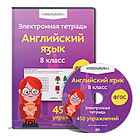1. Match the abbreviations with their definitions:
Example: a – 1
1. ATIS a. automatic terminal information service
2. ADF b. instrument landing system
3. DME c. very high frequency
4. GPS d. non-directional beacon
5. ILS e. very low frequency
6. NDB f. VHF omni-directional range
7. RMI g. global positioning system
8. VHF h. radio magnetic indicator
9. VLF i. distance measuring equipment
10. VOR j. automatic direction finder
2. Fill in the gaps with the correct prepositions where necessary.
1. There are systems essential … controlling the aircraft, they consist … the elevator, aileron,
and rudder.
2. The flaps enable the pilot to change the lifting characteristics … the wing and also to
decrease the speed … which the wing stalls.
3. A source … electricity … starting the engine is stored … a battery.
4. APU can be connected … receptacles that some airplanes are equipped … .
5. To connect the main electrical system … the equipment a bus bar is used as a terminal
… the airplane electrical system
6. The boost pump provides added reliability … the fuel system, and is also used as an aid …
engine starting.
7. Fuel lines pass … a selector assembly located … the cockpit.
8. A sump … the bottom … the engine crankcase is usually the place where the engine
oil is stored.
9. Engine failure could be caused … a loss … oil pressure.
10. This system is normally divided … at least two systems … maximum degree …
independence.
3. Сomplete the following sentences with infinitive or gerund.
1. The elevator, ailerons and rudder are essential in … the aircraft. (to control).
2. The goal of airplane designers is … maximum efficiency (to obtain).
3. Additional weight lowers the efficiency of the airplane by … its speed. (to reduce).
4. Wings are subjected to thorough analysis before … for use on airplanes (to approve).
5. The increased lift enables the pilot … steeper approaches to a landing without … airspeed. (to make, to increase).
6. When the flaps are no longer needed, they can … (to retract).
7. Mechanical linkage allows the pilot … the angle of attack of the entire horizontal stabilizer (to change).
8. The trim tab is a part of the elevator but may … independently of the elevator (to move).
9. Care must … in … engines using APU when the battery is dead. (to exercise, to start).
10.The oil system provides a means of … and … oil throughout the internal components of the engine (to store, to circulate).
4. Read Text “Air Navigation” and pay attention to the way they are used
in the context.
Text AIR NAVIGATION
During the climb, the emphasis in the cockpit quickly shifts from manipulating the controls
to an air navigation. Air navigation is the means by which pilots reach their destinations
and find their exact locations at any time. All airlines have compasses and other instruments
to help pilots navigate accurately; some are also equipped with electronic computers to
aid in navigation. However, the most essential aid to air navigation is the aeronautical chart.
There are several different kinds of aeronautical charts. Some look much alike maps:
they show the location of various landmarks, airline routes, landing fields, and radio stations
that broadcast air navigation signals. Another chart which is widely used shows aeronautical
information for every enroute high altitude airway in a given region.
Information on this kind of chart ( sometimes called a radio chart ) includes the portrayal
of the airway jet routes, identification and frequency of radio aids, selected airports, distance,
time zones, and related information – all of which is needed for radio navigation.
The three chief methods of air navigation over land are pilotage, dead reckoning, and radio
navigation. Most pilots use a combination of all three of these methods.
Pilotage is the simplest and most common method of air navigation. Using this method, a pilot
keeps on course by following landmarks on the ground. For a commercial pilot this system is not
very practical since it cannot be used at high altitudes and in all weather conditions. The second
method of air navigation, dead reckoning, is a way of navigating when there are few or no visible
landmarks. Dead reckoning takes more skill and experience than pilotage. Here the pilot
uses an aeronautical chart, a clock, compass, and small computer (a slide rule) to follow the
preplanned route of flight. Dead reckoning is not always successful because changing winds
prevent the plane from keeping exactly on course.
Radio navigation is used by all commercial pilots, as well as by most other pilots. For this
type of navigation, the pilot tunes the radio navigation equipment so as to receive a signal
from a ground – stationed NAVAID ( navigational aid ). A needle on the equipment tells
the pilot when he is flying on a direct course to or from the station. It also shows when the
aircraft drifts off course so that its direction can be corrected.
The most common system designed for civil aircraft is called VOR (very-high frequency
omnidirectional radio). Airlines also use another special device called DME (distance
measuring equipment). This combined system is known as VOR / DME. A similar
system used almost exclusively for military aircraft is called TACAN (tactical air navigation).
A combined system, called VORTAC, can be used by both civil and military aircraft. Before
evolution of these systems the radio compass low-frequency radio receiver together with the
nondirectional beacon (NDB) was the major aid in air navigation.
The low-frequency radio receiver allows the pilot to home on signals from the radio station.
Airways are formed by a line connecting one navigational aid to another. These airway corridors
are identified on the pilots’ aeronautical chart. When the pilot plans a mission, he designates
the route of flight via the airway system on the international flight plan, which is then filed
with ATC. In flying on an airway, the pilot tunes and identifies the NAVAID to be used, then
proceeds inbound to that NAVAID on the radial which defines the airway as shown on the aeronautical chart. After passing over the station, he proceeds outbound on another airway radial.
Soon the aircraft reaches a changeover point. At this point the pilot switches from tracking outbound on the original NAVAID to inbound on another new one.
This process is repeated from NAVAID to NAVAID until the pilot reaches the destination. Pilots,
however, use other methods for navigating across oceans.
There are three transoceanic navigation systems commonly used by civilian air transports
throughout the world :
1. Inertial navigation system.
2. LORAN.
3. Decca.
5. Complete the following sentences with the suitable word
or phrase. Refer to Text “Air Navigation”
1. An……………………………………will depict the airway structure for a
………………………………………………………………………… given region.
2. …………………….. is the simplest form of navigation.
3. All commercial pilots use ……………………….. navigation.
4. With the instruments in the cockpit, a pilot can tell if he is …………………………
……………………………going to or from ……………………………………………..
5. The most common radio navigation aids today are the……………….
6. A pilot can …………….. on a signal received from a nondirectional beacon.
7. Distance measuring equipment measures . . . . . .
8. In flying on an airway, a pilot must fly . . . . and . . . . each NAVAID used.
9. LORAN means ……………………………. .
10. Radio navigation is the means by which pilots can reach their
……………………….and find their exact …………………… at any time.
B: Now read the text again to check your answers.

 Получите свидетельство
Получите свидетельство Вход
Вход












 Методическая разработка: "Air Navigation" (40 KB)
Методическая разработка: "Air Navigation" (40 KB)
 0
0 421
421 1
1 Нравится
0
Нравится
0



